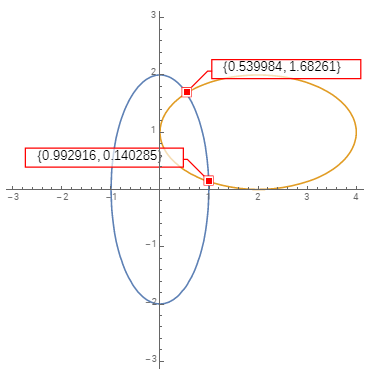I need to find the points at which the two ellipses implicitly defined by
$\qquad y^2=4-4\,x^2 \quad[E1]$
and
$\qquad (1-(x/2))^2+(y-1)^2=1 \quad[E2]$
intersect.
So I isolated $y$ in E2 and then squared it so that I could eliminate it using E1 and then solve for $x$. This turned to be very gnarly.
Is there an easier way of finding the intersection points of E1 and E2? (as shown here in graph)
ContourPlot[
{(y^2 == 4 - 4*x^2), ((1 - x/2)^2 + (y - 1)^2 == 1)}, {x, -5, 5}, {y, -5, 5},
Frame -> False, Axes -> True]



